Find more information in the General Comments section of the assessment
Find more information in the Rating Validity tab of the assessment
- See More
- See More
- See More
- See More
- Good
- Adequate
- Marginal
- Weak
- Poor
 Passenger
Passenger
 Driver
Driver
 Front Seat
Front Seat
 Car
Car
 Pole
Pole
- Good
- Adequate
- Marginal
- Weak
- Poor


Passenger
outboard
center
Fitted to the vehicle as standard
Not fitted to the test vehicle but available as option
Not Available
-
Infants up to 13 kg
-
Infants and toddlers up to 18 kg
-
Toddlers from 9 to 18 kg
-
Toddlers over 18 kg
Easy
Difficult
Safety critical
Not allowed
| Seat Position | ||||
|---|---|---|---|---|
| Front | 2nd row | |||
| Passenger | Left | center | Right | |
| Maxi Cosi Cabriofix (Belt) | ||||
| Britax Römer King Plus (Belt) | ||||
| Britax Römer Duo Plus (ISOFIX) | ||||
| Britax Römer KidFix (Belt) | ||||
| Maxi Cosi Cabriofix & EasyFix (Belt) | ||||
| Maxi Cosi Cabriofix & EasyFix (ISOFIX) | ||||
| BeSafe iZi Kid X3 ISOfix (ISOFIX) | ||||
| Maxi Cosi Pearl & Familyfix (ISOFIX) | ||||
| Britax Römer KidFix (ISOFIX) | ||||
Easy
Difficult
Safety critical
Not allowed
Based on dummy readings in the dynamic tests, the Citan scored maximum points for its protection of both the 3 year and the 1½ year dummy. In the frontal test, forward movement of the 3 year old dummy, sat in a forward facing restraint, was not excessive and, in the side impact, both dummies were properly contained within the protective shells of their restraints, minimising the likelihood of head contact with parts of the car interior. The passenger airbag cannot be disabled, so a rearward-facing child restraint cannot be used in that seating position. Improvements made by Mercedes-Benz mean that all child restraints for which the car is designed can now be properly installed and accommodated.
- Good
- Adequate
- Marginal
- Weak
- Poor

Head Impact 14.0 Pts
Pelvis Impact 0.5 Pts
Leg Impact 5.9 Pts
Pedestrian test results were carried over from the original assessment. The bumper was predominantly good but the front edge of the bonnet provided poor protection in most of the areas tested. Adequate protection was provided by the bonnet over much of its surface but protection in those areas where an adult's head might strike was mostly poor.
- Good
- Adequate
- Marginal
- Weak
- Poor
| Speed Limitation Function | Manually Set |
| System Name | ESP 9i | |
| Performance | ||
| Vehicle Yaw Rate @ COS + 1.00 s | 2.68% | meets ECE requirements |
| Vehicle Yaw Rate @ COS + 1.75 s | 1.651% | meets ECE requirements |
| Lateral Displacement @ BOS + 1.07 s | 2.66 m | meets ECE requirements |
--safetyAssistCommentEN--
- Specifications
- Safety Equipment
- Videos
- Rating Validity
Specifications
Tested Model Mercedes-Benz CITAN Kombi, 109 Blue Efficiency 'High' grade
Body Type - Small MPV
Year Of Publication 2013
Kerb Weight 1460kg
VIN From Which Rating Applies - WDF4157031U129453
Class Small MPV
Safety Equipment
Note: Other equipment may be available on the vehicle but was not considered in the test year.
Fitted to the vehicle as standard
Fitted to the vehicle as option
Not fitted to the test vehicle but available as option
Not Available
Not Applicable
Videos
Rating Validity







Find more information in the General Comments section of the assessment
The Mercedes-Benz CITAN Kombi was first tested by Euro NCAP in April 2013, and was given a three star rating. Mercedes-Benz indicated at that time that they would improve the safety performance of the vehicle, especially the deployment of the side airbag and the installation of child restraints; and that they would provide a seatbelt reminder for the front passenger seat and make the speed limitation device comply with Euro NCAP's requirements. These changes are now in production and Euro NCAP has re-assessed the vehicle. Several tests have been re-done to assess the changes that Mercedes-Benz have made. Where the performance is not influenced by the changes, test results have been carried over from the original assessment.
 Share
Share
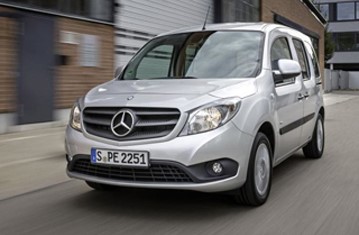
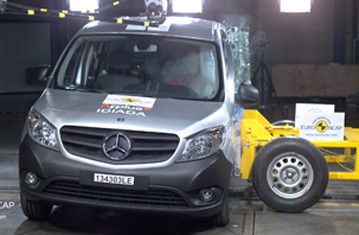
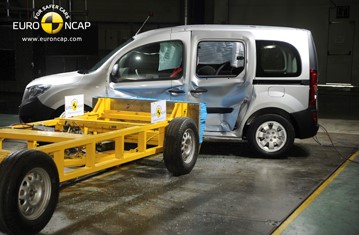
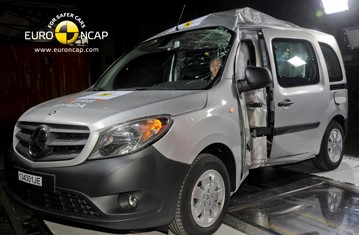
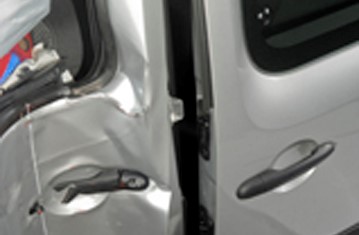




The passenger compartment remained stable in the frontal impact. Dummy readings indicated good protection of the knees and femurs of the driver and passenger dummies. Inspection of the vehicle showed that some structures in the dashboard presented a hazard to the knees and femurs of occupants of different sizes and to those sat in different positions. Dummy readings of chest compression indicated marginal protection of the driver's chest. The improvements made by Mercedes-Benz to the side airbag deployment proved successful and the Citan scored maximum points in the side barrier test with good protection of all body regions. In the side pole impact, the airbag deployed correctly but protection of the chest was rated as marginal. There was a gap between the B-pillar and the front edge of the sliding door. Although this gap was smaller than in the original Citan test, a penalty was again applied to the score. The front seats and head restraints provided marginal protection against whiplash injury in the event of a rear-end collision.